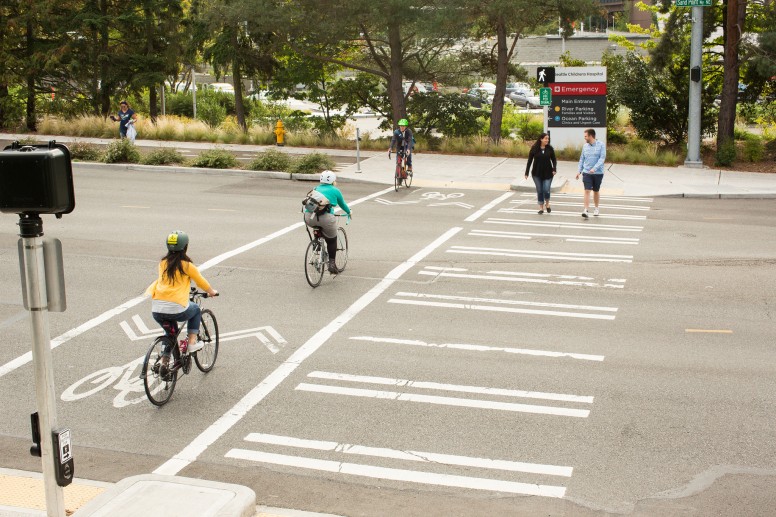Today, May 20, is National Bike to Work Day, rounding out this year’s National Bike to Work Week. It’s well known that biking is good for your body and brain, as well as the environment and your wallet. And in recent years, more Americans have been opting for two wheels. Between 2000 and 2012, the share of commuters who biked to work rose by 60.8 percent–a larger increase than any other mode. Despite that growth, bicycle commuting nationwide remains low: just 0.6 percent of workers commute via bike.
.@SenSchumer and @NYC_DOT Commissioner @Pollytrott joined us for #BiketoWorkDay at Grand Army Plaza! @ElbyBike pic.twitter.com/2MTIIKsoJl
— Transportation Alternatives (@TransAlt) May 20, 2016
The uptick in biking in recent years has been much more concentrated in urban settings. Roughly 0.4 percent of commuters who live in the suburbs or outside of a metro area bike to work according to census data from 2008 to 2012. In 2005, 0.7 percent of commuters in the nation’s most populous cities biked to work, but by 2013, that rate had risen to 1.2 percent. During that time, several cities adopted bike sharing systems and installed record miles of protected bike lanes. In New York City alone, the number of daily bike trips grew 320 percent in 25 years.
With more and more people choosing to bike, there’s no time to waste in building safe, dedicated infrastructure. In a survey of American adults commissioned by PeopleForBikes, 53 percent of respondents said they would like to ride their bike more often. Meanwhile, 52 percent said they were concerned about being hit by a driver while biking, and 46 percent said they’d be more likely to bike if there were protected infrastructure. Unsafe conditions don’t just deter adult riders: just 2.2 percent of students biked to and from school in 2012. Three of the four most-cited barriers by families who did not allow their children to walk or bike to school were traffic safety concerns.
Separated bike infrastructure makes streets safer for all road users, benefits adjacent businesses and even boosts bike ridership. But all too frequently, such proposals to improve safe street networks are derailed by a vocal minority.
New York City in particular plans to install a total of 17.8 miles of protected bike lanes in 2016, a record number for a single year. The city cannot afford to weaken such ambitious plans. In 2014, nearly 1.6 million New Yorkers rode a bike at least once in the past year. A comprehensive network of separated bike infrastructure would surely encourage more people to bike, yes, but it would also better protect those New Yorkers already riding the streets.


How about population control? You keep jamming millions of people in a small area and have to create all kinds of new laws, regulations and street changes that costs millions. Look at Long Island we use o be able to play ball in the street and now you can barely even get to work because there are hundreds of accidents each day. I can’t wait to leave this God forsaken over populated Island that costs way too much to pay for the bloated Govt and social benefits.